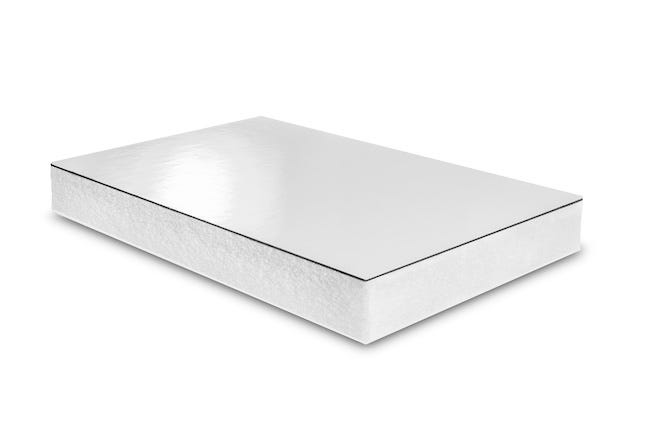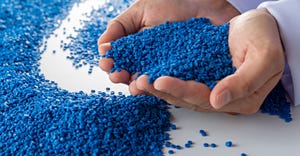High Melt Strength PP Foam Reduces Vehicle Emissions, Increases Recyclability
Sabic is exhibiting two transportation applications at NPE that demonstrate the lightweighting, processing, and sustainability features of its PP-UMS foam resin.
May 9, 2024

Sabic is spotlighting two diverse transportation applications that demonstrate the potential benefits of Sabic PP-UMS (Polypropylene – Ultra Melt Strength) foam resin at NPE2024 (Booth S19005). The material features high melt strength for high levels of foamability and enables the extrusion of PP foams with very low density, good impact resistance, and compliance with VDA 278 emission regulations.
Sabic PP-UMS foam resin’s processing versatility allows PP foams, subject to user testing, to be used in structural cores for sandwich panels in delivery vans, trucks, and recreational vehicles (RVs), and to provide structural and insulative properties in blow-molded air ducts. Examples of these applications, on display at the Sabic booth, illustrate the suitability of this foam resin for broad use in transportation components that can benefit from significant weight reduction and potential cost optimization.
Low-density PP foam extrusion.
“This distinctive foam resin with exceptional melt strength enables the extrusion of PP foam with very low density, which can help the transportation industry advance lightweighting goals by replacing heavier material combinations ranging from metal and wood to solid polymers,” said Amanda Roble, director, Advanced Consumer Solutions. “But Sabic PP-UMS foam resin does even more. Its purity and cleanliness address the most stringent automotive emission regulations, while its processing flexibility and blendability make it adaptable to many different applications. We look forward to working with the transportation value chain to develop new and innovative foam solutions.”
Suited for sandwich panels.
The PP foam produced with Sabic PP-UMS foam resin can function as a strong, insulative core material for sandwich panels in trucks, delivery vans, and RVs, replacing metal, wood, and competitive foams. Panels with PP foam cores produced from Sabic PP-UMS resin can reduce weight and help lower carbon dioxide emissions.
The Sabic foam resin is typically combined with other PP materials to produce the foam core. Adding a glass fiber–reinforced PP face sheet results in a mono-material part that is easier to recycle than a mix of material types. Furthermore, foam produced with Sabic PP-UMS foam resin can be thermally bonded to the PP face sheet, avoiding the need for adhesives.
Another advantage of the PP-UMS foam resin–based panel is its impact resistance. In addition, panels using the Sabic foam resin can be repaired easily if damaged and are durable because the foam resin does not react with water.
A sample composite PP sandwich panel from an RV floor, comprised of a glass fiber–reinforced PP face sheet and foam core, is on display at the Sabic booth.

Structural cores for sandwich panels in delivery vans, trucks, and recreational vehicles can be made from Sabic PP-UMS foam resin. Image courtesy of Sabic.
Auto air duct potential.
Blow-molded PP foam produced with Sabic PP-UMS foam resin can be used in automotive air ducts to help reduce weight and simplify the mounting process in the vehicle. The foam resin creates a mono-material part for easy recycling in existing waste systems. An air duct, approximately 60 inches long (pictured at the top of this article), is in commercial use and can be viewed at the Sabic booth.
Besides weight savings and recyclability, this air duct offers additional functionality, including insulation properties that can save energy and help extend the range of electrical vehicles. This inherent insulative capability and smart design help manufacturers avoid the need to add insulation to the part. The results are additional savings on weight and cost (labor and material).
Sabic PP-UMS foam resin is a new-generation, long-chain branched PP material with a melt strength greater than 65 cN to enable very low foam densities (20 to 200 kg/m3). It offers a broad processing window using various methods — foam extrusion, foam injection molding, foam blow molding, particle foaming, and foam blown and cast film. Sabic supports its materials with the resources of the Foam Innovation Center in the Netherlands. The center provides leading-edge technologies and a platform for collaboration with customers and organizations across the foam industry value chain.
NPE2024 is taking place from May 6 to 10 in Orlando, FL.
About the Author(s)
You May Also Like




